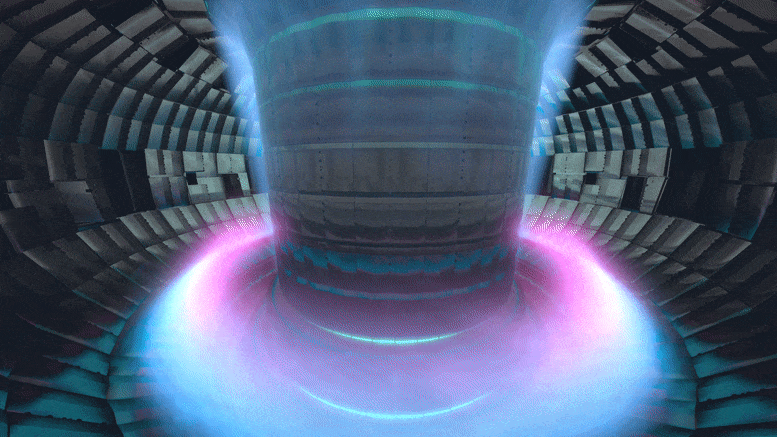
The update demonstrates that we can actually safely utilize more hydrogen fuel in fusion reactors, and therefore obtain more energy than previously thought.
There is currently an international fusion research megaproject called ITER that seeks to replicate the fusion processes of the Sun to create energy on the Earth.In a fusion reactor, the process takes place inside a donut-shaped (“toroidal”) structure called a “tokamak.”.
The tokamak thermonuclear fusion reactor at Swiss Plasma Center.“In order to create plasma for fusion, you have to consider three things: high temperature, high density of hydrogen fuel, and good confinement,” says Paolo Ricci at the Swiss Plasma Center, one of the world’s leading research institutes in fusion located at École polytechnique fédérale de Lausanne (EPFL).Working within a large European collaboration, Ricci’s team has now released a study updating a foundational principle of plasma generation – and showing that the upcoming ITER tokamak can actually operate with twice the amount of hydrogen and therefore generate more fusion energy than previously thought.“One of the limitations in making plasma inside a tokamak is the amount of hydrogen fuel you can inject into it,” says Ricci.“Since the early days of fusion, we’ve known that if you try to increase the fuel density, at some point there would be what we call a ‘disruption’ – basically you totally lose the confinement, and plasma goes wherever.
So in the eighties, people were trying to come up with some kind of law that could predict the maximum density of hydrogen that you can put inside a tokamak.”.
An answer came in 1988, when fusion scientist Martin Greenwald published a famous law that correlates fuel density to the tokamak’s minor radius (the radius of the donut’s inner circle) and the current that flows in the plasma inside the tokamak.Working with fellow tokamak teams, the Swiss Plasma Center, designed an experiment where it was possible to use highly sophisticated technology to precisely control the amount of fuel injected into a tokamak.This large experimental effort was made possible by the EUROfusion Consortium, the European organization that coordinates fusion research in Europe and to which EPFL now participates through the Max Planck Institute for Plasma Physics in Germany.
At the same time, Maurizio Giacomin, a PhD student in Ricci’s group, began to analyze the physics processes that limit the density in tokamaks, in order to derive a first-principles law that can correlate fuel density and tokamak size.“Actually, DEMO will operate at a much higher power than present tokamaks and ITER, which means that you can add more fuel density without limiting the output, in contrast to the Greenwald law.
